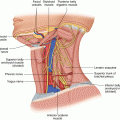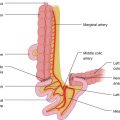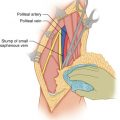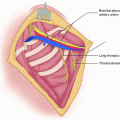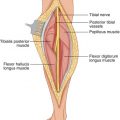(1)
State University of New York at Buffalo Kaleida Health, Buffalo, NY, USA
Tumors in the lesser sac present difficulties for their resection because of the crowding of large vessels and other important structures. The resection of the tumor depends not only on the size of the tumor and its precise location, but also on whether the margins of the tumor have infiltrated adjacent structures. When the tumor does not extend laterally to involve the lateral abdominal wall, the operation can be done with the patient supine on the operating table, using a midline incision (Fig. 36.1). After the abdomen is opened, exploration is carried out to define the extent of the disease (Fig. 36.2). The lesser omentum (gastrohepatic ligament) is incised close to the liver surface, using an avascular area of this ligament. The lesser sac is opened (Fig. 36.3). The gastrocolic ligament may be divided below the gastroepiploic arcade, exposing the lower portion of the lesser sac (Fig. 36.4). Alternatively, whenever there is need for the omentum to be removed en bloc with the gastrocolic ligament and the underlying tumor, the greater omentum is lifted and dissected off its attachment to the transverse colon. The decision whether to divide the gastrocolic ligament below the gastroepiploic arcade or to include the greater omentum with this ligament depends on the location and biology of the tumor. Soft tissue sarcomas rarely metastasize to lymph nodes, so it is generally not necessary to include what may be the regional nodal area, except for purposes of wide excision. The short gastric vessels are ligated and divided. In the case illustrated, it is appreciated through the opening in the gastrosplenic ligament that the proximal portion of the stomach is free. Because the posterior wall is attached to the tumor, however, the distal portion of the stomach will be removed en bloc with the tumor mass by stapling through the first portion of the duodenum, ligating and dividing the right gastric and right gastroepiploic vessels. The proximal part of the stomach is also divided, leaving the gastric remnant for anastomosis later with the proximal jejunum. The splenic artery is identified (Fig. 36.5). Because this artery is clearly involved distally by the tumor, it is ligated and divided proximally (Fig. 36.6). Before dividing this artery, however, one makes certain that good pulses continue in the superior mesenteric artery and its mesenteric branches after the artery is ligated or temporarily occluded (for 10 min) with a vascular clamp. With the obscurity caused by the tumor mass, it is possible to confuse the splenic artery with the superior mesenteric artery, so before any major vessels in that area are divided, it is mandatory to ensure that the pulses of the superior mesenteric artery in the mesentery of the bowel remain strong and normal.


Fig. 36.1




An upper midline incision is made
Stay updated, free articles. Join our Telegram channel

Full access? Get Clinical Tree




